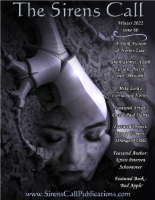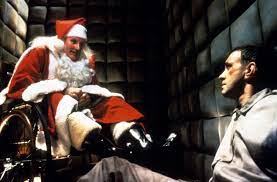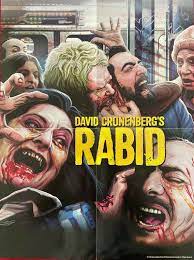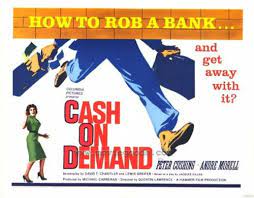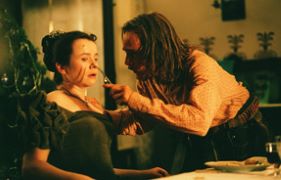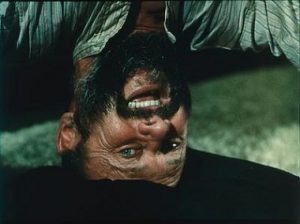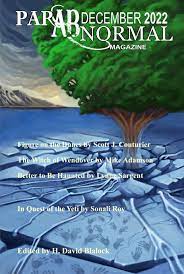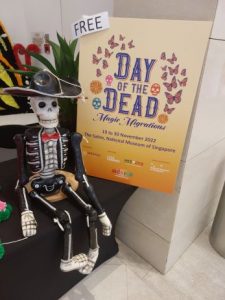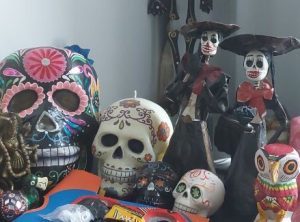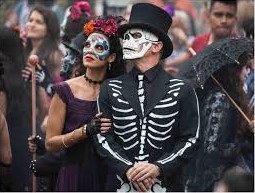
© White Rabbit
Sing Backwards and Weep, the autobiography of singer, songwriter, musician and poet Mark Lanegan, was published in 2020, two years before Lanegan’s untimely death. It’s not a book to read if you want to know about the creative processes that went into Lanegan’s impressive body of work. This included being vocalist with the grunge band the Screaming Trees for 16 years, contributing to alternative / stoner rock band Queens of the Stone Age during their glory years of the early noughties, being one half of the Gutter Twins with the Afghan Whigs’ Greg Dulli, and producing a dozen solo albums – of which, in my opinion, Whiskey for the Holy Ghost (1994), Bubblegum (2004) and Blues Funeral (2012) are particularly excellent. Lanegan also seemed to be the world’s most prolific collaborator, working with an array of musicians and bands that included Moby, the Breeders, Melissa Auf der Maur, the Eagles of Death Metal, Tinariwen, Hey Colossus, Cult of Luna, the Manic Street Preachers and Belle and Sebastian’s Isobel Campbell.
No, you get little insight into that in Sing Backwards and Weep. What you get is a lot, at times a non-stop barrage, of despair and degradation that’s often of a drug-fuelled nature. This is mingled with much bile directed at other people, including many working in the music industry, and much loathing directed at himself. But while there were passages of Sing Backwards and Weep that I read wincing, the equivalent of how I’d watch a gruelling horror film through my fingers, I did end up feeling this was one of the best rock-music bios I’d ever come across.
In terms of grimness, the book hits the ground running. Lanegan introduces himself as being “from a long line of coal miners, loggers, bootleggers, South Dakotan dirt farmers, criminals, convicts and hillbillies of the roughest, most ignorant sort”, and says of his hometown Ellensburg in Washington state: “I hated this dead-end redneck town, hated the ignorant right-wing, white-trash hay farmers and cattlemen talking constantly about the weather, hated the constant battering wind that blew the putrid smell of cow shit everywhere.” He detested his mother, a feeling that she reciprocated. While he was much fonder of his father, the man had an alcohol problem and was distant, ineffectual and incapable of controlling his son.
The young Lanegan predictably became a delinquent. At the age of eighteen he narrowly avoided spending a year-and-a-half in prison, the rap-sheet he’d accrued by then including “vandalism, car prowling, multiple counts of illegal dumping of garbage, trespassing, 26 tickets for underage drinking, shoplifting alcohol, possession of marijuana, bicycle theft, tool theft, theft of car parts, theft of motorcycle parts, urinating in public, theft of beer keg and taps, insurance fraud, theft of car stereos, public drunkenness, breaking and entering, possession of stolen property, and… a disorderly conduct charge.”
In 1984 Lanegan joined local band the Screaming Trees. This was hardly a moment of epiphany, where he forgot the misery of existence and instead discovered the transcendental joys of creativity and art. Far from it. A long time passed before Lanegan became happy with the Trees’ music. Until then, he felt, “Our records were a shitty mishmash of half-baked ideas and catchy tunes derailed by the stupidest of lyrics.” Also, his relationship with the band’s guitarist / songwriter Lee Conner was adversarial to say the least. “Lee was completely inept socially and expected the world to come to him, something that was never going to happen.” An incident on tour where Conner received a severe electric shock from a broken light-bulb on the frame of a dressing-room mirror is both darkly hilarious and indicative of the scorn Lanegan felt for him: “He flopped like a fish on a line and I saw blue light coming out of the wall as he electrocuted himself on the broken filament… I howled with maniacal glee.”

From wikipedia.org / Copyright unknown
Yet the Trees were, as the adage goes, ‘in the right place at the right time’. Elsewhere in Washington state, in its capital Seattle, the world-conquering musical movement that’d become known as ‘grunge’ was gathering momentum and the Trees would find themselves one of its leading bands – though grunge was a label Lanegan despised. He got a glimpse of what was on the way when an up-and-coming band called Nirvana performed in his hometown: “Perhaps one of the best bands I’d ever seen, in the f**king Ellensburg Public Library no less.” This was the start of a close friendship with the gifted and charismatic but troubled Kurt Cobain. When Nirvana later became the biggest rock band on the planet, Lanegan observes how Cobain “was disgusted by the pedestal he’d been set atop and the ass-kissing sycophants he encountered at every turn.” After Cobain’s suicide in 1994, he writes: “I was lost in the darkest, most depressing regret and self-loathing I’d ever experienced.”
After relocating to Seattle, Lanegan also bonded with Layne Staley, the singer of fellow grunge outfit Alice in Chains: “one of the most naturally hilarious, magical, mischievous, and intelligent people I’d ever met.” Staley would die in 2002, another victim of the apparent ‘curse of grunge-band singers’ that’d struck down Cobain and would later claim Scott Weiland of the Stone Temple Pilots in 2015, Chris Cornell of Soundgarden in 2017 and Lanegan himself in 2022.
Thus, things get pretty awful during the course of Sing Backwards and Weep, for Lanegan’s friends and associates and for Lanegan himself, but it’s a remarkably funny book too. Funny in a macabre way, obviously. Many of Lanegan’s most amusing anecdotes involve famous people. There’s James Garner, star of television’s The Rockford Files (1974-80), who’s a guest on an episode of Jay Leno’s The Tonight Show in 1993 where the Screaming Trees give a disastrous live performance. Afterwards, when Lanegan is persuaded to sit down with Leno and his guests, Garner grasps his hand and says, “How you doing, young fella? I’m Jim. That wasn’t bad, young fella. It coulda been a lot worse!”
There’s the film star Matt Dillon, victim of an arson attack by Lanegan: “…while drinking together post-gig in a NYC bar, I stuck my lit cigarette into the pocket of Matt Dillon’s suit jacket when his back was turned and set it on fire as I walked away.” The reason for this? Dillon had appeared in the 1992 movie Singles, Hollywood’s attempt to cash in on the grunge phenomenon, which Lanegan considered “a lame and sap-filled farce of a movie… To me, it may as well have been the Spice Girls film.”
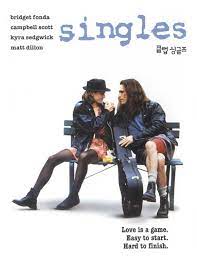
© Warner Bros
There’s a funny anecdote about Nick Cave, who’s in Seattle and arrives at Lanegan’s door to make a drugs transaction – by this point Lanegan was selling drugs from his apartment, to everyone from ‘street people, mostly Eritrean and Ethiopian migrants’ to ‘traveling rock bands’, and spending the profits on heroin. He’d attracted the ire of his neighbours and was ‘especially despised by a young goth couple whose door was directly opposite mine.’ After the sale, “the couple just happened to be unlocking their door and entering their apartment. As we stepped out, they caught a glimpse of Cave standing there in his three-piece suit, his iconic jet-black pompadour perfectly in place, and almost broke their necks doing a double take.”
However, the laugh-out-loud highlight of the book is the chapter where Lanegan recounts what happened in September 1996 when the Screaming Trees took part in a North American tour as support to then Britpop superstars Oasis. It would be an understatement to say that Lanegan and the Oasis singer and notorious gobshite Liam Gallagher didn’t hit it off. At the tour’s start, Gallagher accosted Lanegan with a mocking cry of “Howling Branches!”, which prompted the response, “F**k off, you stupid f**king idiot” – ‘spoken as if to a bothersome mosquito.’ Predictably, Gallagher took this badly. Lanegan’s disdain for the lippy Mancunian increased when he heard that Gallagher had insulted one of his idols, Neil Young. “It was one thing to be a prick to me, but how dare that son of a bitch be rude to Neil?”
Lanegan fills the chapter with hilarious anti-Gallagher invective: “He had probably been a low-life c**ksucker his entire life. Maybe he’d been a bedwetter, shit his pants at school, or been cut from the football squad as a youngster and never gotten over it. I couldn’t believe someone hadn’t beaten, knifed, or shot him to death by now, such was the reckless, witless, and despotic nature of his insufferable façade.” After Gallagher seemingly promised that there’d be a physical reckoning between the two of them in Miami, the final gig of the tour, Lanegan got so wound-up in his hatred that, one day in a taxi, he poured his heart out about it to the driver. The taxi driver had him swap a ten-dollar bill for a roll of quarters and advised him: “Keep these in your fist and the next time you see him, break his f**king jaw.”
Alas, the Miami showdown never happened, for Oasis curtailed the tour and flew back to England early. While it’s more likely that internal tensions within Oasis at the time were responsible for this, Lanegan believed it was because of Gallagher’s fear of the drubbing he was going to get: “That phony motherf**ker had pissed his pants and gone home to mama before I had a chance to blow this whole thing up myself.”
But the laughs in Sing Backwards and Weep come amid much darkness. Lanegan’s self-loathing is a recurring motif. When he was with Cobain, he felt he was an “actively negative presence in the life of this beautiful and talented man, who instead of showing him any positive guidance, consistently chose to take the low road so that I could continue to stay high…” Reflecting on his knack for sabotaging any opportunities to find success and happiness, he muses, “…I was an expert on trading gold for garbage.”
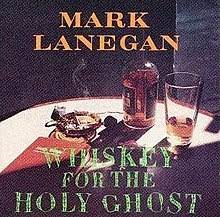
© Sub Pop
This isn’t just melodramatic, self-obsessed whining. Events described throughout the book give ample justification for Lanegan’s low opinion of himself. Particularly bleak are the final pages, which see him reduced to homelessness – sleeping ‘under a dingy blue tarp I had pulled out of a dumpster’ – and dependent on selling drugs and robbing shops to survive. This comes to an end only through interventions by Cobain’s widow Courtney Love and Guns ‘N’ Roses bassist Duff McKagan, which get Lanegan into a Californian drug-treatment programme and then into accommodation and employment.
However, it’s a chapter before that, entitled Ice Cold European Funhouse and detailing part of a Screaming Trees tour in the late 1990s that incorporated Sheffield, Bristol, Essen, Amsterdam and London, that really illustrates the depths Lanegan had sunk to. By this point, he was so blighted by his addictions that his bandmates “had begun to refer to me behind my back as ‘Mr Burns’, the old, bitter, bent-over, and creepy boss in The Simpsons cartoon television programme.” The descriptions of his increasing desperate attempts to procure heroin across England, Germany and Holland, with his body wracked by withdrawal symptoms and his behaviour becoming more and more unhinged, are nightmarish.
Fate seems to conspire against him. His efforts are continually thwarted by him not having any money to buy the drugs, by him not having tickets for the night-buses or fares for the taxis he needs to get to and from the dealers, by criminals selling him fake heroin, by other criminals mugging and robbing him… It’s like watching Wile E. Coyote constantly failing to catch the Roadrunner, with Lanegan as the Coyote and the drugs as the Roadrunner. All this takes place against the intense, miserable cold of a north European winter.
At one point, trying to make it to a dealer’s place on a street in King’s Cross, he “began to projectile vomit so hard that it took me to my knees, then flat out on the ground. Despite the fact that I’d not eaten any food in two days, up came copious quantities of pure-black liquid.” At another point, in Amsterdam, penniless but determined to obtain funds to score, he goes after the man responsible for selling the tour’s merchandising and demands that he gives him money. Terrified, the ‘merch guy’ hides in his hotel room. “I began trying to actually kick the door in, trying my damnedest to gain entry to actually murder this recalcitrant son of a bitch.” Back in London, when someone tries to mug and rob him a second time, he beats the shit out of his would-be attacker: “…all the repressed anger, pain, and extreme anxiety I’d held on to throughout this entire, trying ordeal… came pouring out.” In the midst of these horrors, the Screaming Trees have to perform on the venerable TV music show Later with Jools Holland (1992-present). You can imagine the now utterly raddled Lanegan in the presence of the famously chirpy Holland, “…enduring the half-baked witticisms of the scripted banter between host and guests.”
The Ice Cold European Funhouse chapter could almost be a self-contained short story about the damage that drugs can do to a person. It’d be a great short story too, something that wouldn’t be out of place in, say, the Irvine Welsh collection The Acid House (1994). Incidentally, on my copy of Sing Backwards and Weep, Welsh contributes the blurb on the front cover.
The book ends in 2002. This calls to mind the Chinese saying, “May you live in interesting times,” which initially sounds like a blessing but is actually a curse. Lanegan’s life until then was fascinating to read about, but often hellish for Lanegan himself. After 2002, presumably, he found stability, success and fulfilment, which was great for him but would probably make much less interesting reading material. However, by the time you reach the end of Sing Backwards and Weep, you won’t begrudge the old bugger for having earned the right to live a more boring life afterwards.

From wikipedia.org / © Steven Friederich
